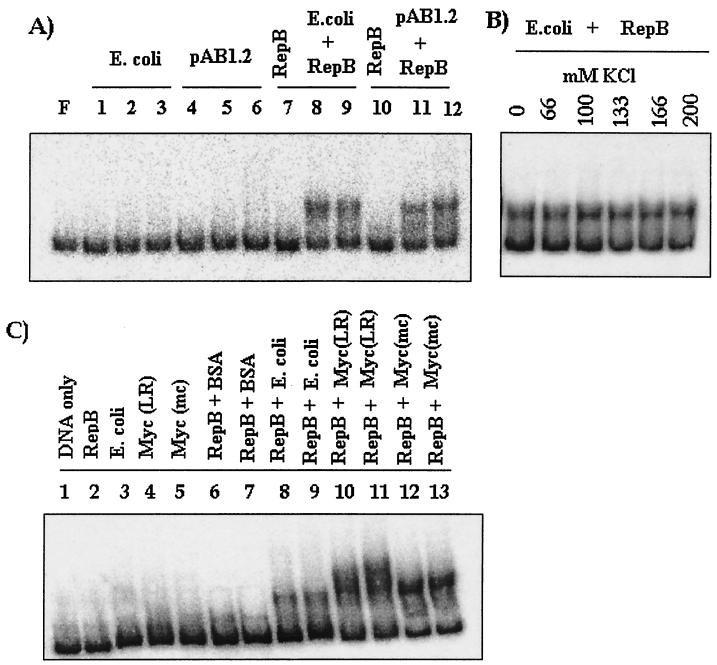FIG. 6.
(A) ori binding activity of RepB with extracts obtained from either E. coli cells or E. coli cells expressing pAB1.2 (RepA). Lanes 1 to 6, ori binding with 10, 20, and 30 μg of extract from either E. coli cells (lanes 1, 2, and 3) or E. coli/pAB1.2 cells (lanes 4, 5, and 6); lanes 7 to 12, ori binding activity of purified RepB (125 ng) either alone (lanes 7 and 10) or in combination with extracts (20 and 30 μg) (lanes 8, 9, 11, and 12). (B) Effect of salt concentration on the complex formed by RepB (125 ng) and E. coli extract (20 μg). (C) ori binding activity in combination with E. coli and mycobacterial extracts. The following protein samples were used for ori binding: lane 2, RepB (125 ng); lane 3, E. coli (20 μg); lane 4, M. smegmatis LR222 [Myc(LR)] (20 μg); lane 5, M. smegmatis mc26 [Myc(mc)] (20 μg); lane 6, RepB (125 ng) plus nonspecific protein bovine serum albumin (BSA) (20 μg); lane 7, RepB (125 ng) plus nonspecific protein bovine serum albumin (30 μg); lane 8, RepB (125 ng) plus E. coli extract (20 μg); lane 9, RepB (125 ng) plus E. coli extract (30 μg); lane 10, RepB (125 ng) plus M. smegmatis LR222 (20 μg); lane 11, RepB (125 ng) plus M. smegmatis LR222 (30 μg); lane 12, RepB plus M. smegmatis mc26 (20 μg); and lane 13, RepB plus M. smegmatis mc26 (30 μg).

